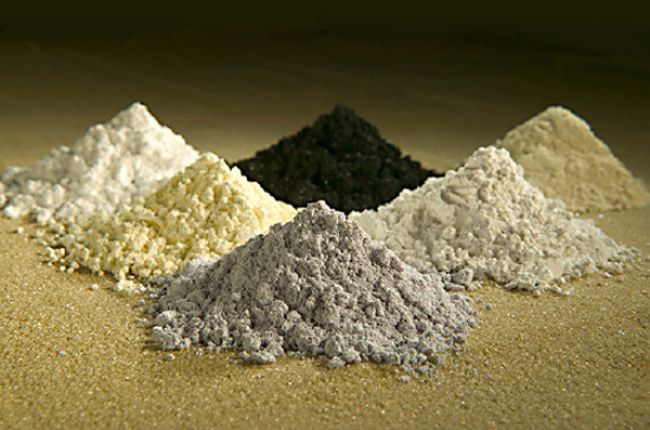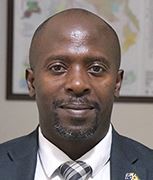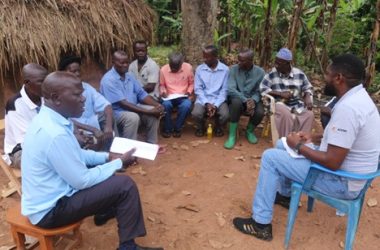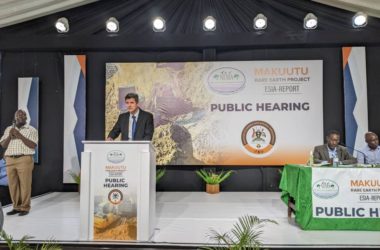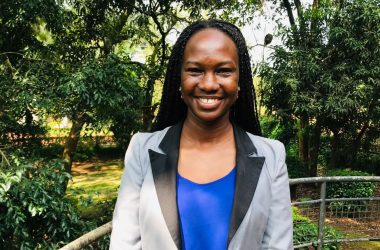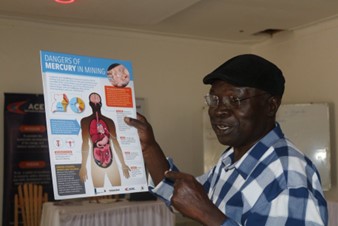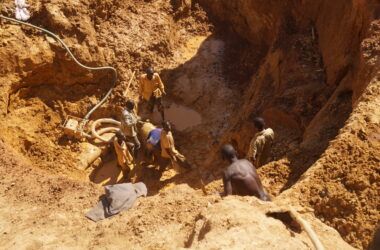On October 14, 2022, the Ugandan President signed into law the long-awaited Mining and Minerals Act, 2012, repealing the Mining Act, 2003. Section 21 of the Mining and Minerals Act, 2022 establishes the National Mining Company to manage Uganda’s commercial holding and participating interests of the state in mineral agreements.
With this background, how safe is it to leave our national earth elements and critical minerals entirely in the hands of the mining industry and markets? Shouldn’t there be active state intervention and ring-fencing of these resources in pursuit of domestic, regional and continental energy, mineral and national security interests in accordance with our national development, Vision 2040 and regional development plans, the Africa Mining Vision, 2009 and Agenda 2063?
How should Uganda go about mining the Rare Earth Elements and other Critical Minerals such as graphite, nickel, copper/cobalt, tin, tungsten, tantalum, lithium, in the wake of a new clean energy, climate smart revolution and global scramble for these resources?
How do we mine these minerals responsibly and sustainably in accordance with global Environmental, Social and Governance (ESG standards?
These are all critical questions that the Ugandan policy makers, the Ugandan president, East African Heads of States and Africa in general must address at the earliest time possible.
Lessons from the global north
The Democratic Republic of Congo (DRC) is currently ‘the Saudi Arabia’ of global cobalt reserves and production critical to the establishment of a lithium-ion battery industry on the continent. These resources and the discoveries of nickel, Rare Earth elements, graphite and lithium, should enable Uganda and her East African Community sister states to collectively claim a share of the estimated US$46 Trillion rich electric vehicle industry by 2050.
However, the U.S, EU, China and Russia treat Critical Minerals as resources of national interest and security. On February 22, 2022, the Biden-Harris Administration, announced major investments to expand domestic critical minerals supply chains to break the 100% dependence on China for 14 of the 17 critical minerals.
The U.S. recognises that critical minerals provide the building blocks for many modern technologies and are essential to the U.S’s national security and economic prosperity. In early 2022, the EU Commission introduced a new legislative proposal, the Critical Raw Materials Act, to help boost supplies of critical minerals such as lithium and Rare Earth while seeking to reduce dependency for critical minerals on other countries, including China where 90% of Rare Earths and 60% of Lithium are processed. In July, 2022, the UK Government launched its first ever Critical Minerals Strategy aimed at improving the security of supply of critical minerals.
Rare Earth elements researcher Misha Glenny (The Scramble for Rare Earths) argues that the Russian-Ukrainian war, which is threatening to turn into World War III, aside from the NATO-Russian geopolitics has a scramble for critical minerals twist to it. It has since emerged that Russia’s annexation of the Crimea and the Donbas region are not only for its territorial integrity, but also of economic strategic importance and regional positioning by holding unto 20% of Ukranian natural resources and critical minerals in these regions that are estimated to be worth US$12.5 trillions.
Similar arguments have been advanced to explain the renewed tensions and outbreaks of insecurity in DRC’s Eastern region, renewed hostilities between DRC, Rwanda and M-23 and the EU’s renewed interest in Africa’s vast mineral resource wealth. All this at a time we should be integrating as one economic and political region to address our regional energy and mineral security interests as one strong critical mineral rich economic powerhouse under the East African Community.
The Magic of Rare Earth Elements
In 2007, a global consortium of 31 universities and colleges across the world took part in developing a 5-Seater plug-in hybrid electric vehicle, the Vision 200, targeting the Indian market. This innovation was led by the famous U.S based Massachusetts Institute of Technology and Uganda’s Makerere University was the only African University chosen to participate in this project.
This experience encouraged the Ugandan team to create a similar vehicle for the Ugandan African market and an opportunity to break the continental jinx of failing to produce anything substantial for the global market.
Kiira EV would be the first African electric motor vehicle way ahead of the 2015 Paris Agreement and the EV tech race that has since emerged between superpowers in search of a clean energy powered vehicle industry.
Although very little is known about the University students that participated in this project and their whereabouts, the project is now fully in the hands of the Ugandan Government.
Visionary as it might be, the success of Kiira EV program lies in our ability to establish a critical minerals National and Great Lakes region strategy, policy and legal framework in collaboration with other East African critical mineral rich countries.
The recent progress of the Makuutu-based Rwenzori Rare Earth metals REE project in Eastern Uganda has been met with excitement and hope.
Rare Earth Elements is a group of 17 chemically similar mineral elements that are sometimes found in minerals containing uranium. 15 of these elements are number 57-71 on the periodic table of elements, Scandium and Yttrium are the other two elements.
Alongside other listed critical minerals such as Copper/Cobalt, Nickel, Zinc, Manganese, iron, tantalum, tin, tungsten, these minerals are at the centre of a global energy transition paradigm shift from fossil fuels to renewable energy.
Since the Paris Agreement of 2015 on net-zero emissions by 2050, a panic button has been placed in the global north in search of cleaner energy technologies and the critical minerals to drive this new energy order world.
Accordingly, demand for Rare Earth elements, most especially neodymium (a super magnet) and dysprosium and all these other critical minerals is estimated to quadruple current supply in the next three decades because of their forecast derived demand.
Critical Rare Earth minerals have in the past two decades been the magic behind the communication and high-tech revolution, manifested in products such as smartphones, smart TVs, 3Ds systems, high end military precision hardware and equipment such as missiles systems and the famous Turkish-made Bayraktar TB2 drones wreaking havoc on the Russian-Ukrainian war front.
The criticality of these minerals lies in fears of supply disruptions, but most importantly it should also raise questions of mineral poverty and mineral security for policy makers in countries with limited exploration and availability of commercial deposits.
In Uganda’s and the Great Lake’s regional context, our energy poverty and energy security can only be addressed by our ability to invest in exploration to identify undiscovered critical raw material endowment or mineral poverty levels as a foundation for a sustainable national and regional solution to critical mineral supplies and security.
The Hidden Environmental and Human Cost
In Uganda, the project to mine Rare Earth elements is touted as a regional game changer with the developers promising regional development and colourful rugs-to-riches utopian stories. The project promises to contribute over US$ 7 billion in state revenues and to create over 1,200 jobs in the country.
The truth of what awaits these communities in form of the environmental and human cost has been smartly and expertly hidden away in the close to 1000-page ESIA report from the unsuspecting innocent mineral rich host communities, neighbouring communities, Project Affected Persons (PAPs), their political leaders and the Busoga Kingdom as major stakeholders.
A critical review of the ESIA report for Makuutu, Rare Earths Project covering the three districts of Bugiri, Mayuuge and Bugweri District within the Busoga Kingdom for which an ESIA certificate of approval was issued by the National Environmental Management Authority (NEMA) on the 26th October, 2022, leaves one dissatisfied at the limited disclosure of important information to the stakeholders that recently attended the public hearings and the environmental ombudsman, NEMA.
The ESIA report glosses over the human and environmental cost of the mineral extraction, processing, and refining as required by the new Mining and Minerals Act, 2022. It underplays the amount of radioactive content and materials that will be generated by the project through its mine life, ignoring the heavy nature of these Rare Earth elements and their associated human and environmental footprint in form of significant amounts of radioactive waste that will be generated through the life of the mine.
In the absence of an ISO 14001 project certification, a comprehensive scientific disclosure and an expert independent 3rd party human health and environmental evaluation of the projects impacts, one is left wondering about NEMA’s capabilities to supervise and monitor the well documented negative human and environmental externalities of such a highly radioactive mineral resource, where first Rare Earth industries in the U.S and China have struggled to contain the same since the 1960s. More worrying is the proximity of the project to Lake Victoria, Lake Kyoga and Lake Nakuwa water basin systems that rely on the river tributaries of Naigombwa, and Lumbuye that originate in the project acreage covering an estimated 40Km2. Radioactive material contamination of the rice and sugar farms within the proximity of the project acreage is another looming impact of this project.
The risk of the thorium sludge seeping through the open-cast mines into the interlinked water systems of this highly sensitive eco-system and rich biodiversity environment, potential failure of the tailing dams, are all potential risks that have not been adequately disclosed and addressed in the ESIA.
Amidist pressures from environmental nymbysts (Not in my backyard environmental activism), the west has in the past opted for the ‘high moral road’ of outsourcing human and environmental pollution to China in protection of its own environment and peoples back home. Unfortunately, this too is predictably coming to an end as the West wakes up to a late realisation of the need to cutback on China’s stranglehold over these critical resources and the refining technology thereto. This is critical to their own energy, minerals, economic, political security and survival. This raises red flags on the environmental, social and governance (ESG) challenges that will emerge as the scramble for these resources peaks between 2022-2050.
Available data reveals that Rare Earth mineral rich, mining, processing and refining regions of China have been overflowing with poisoned water and soils that have caused a spike in abnormal and unprecedented disease outbreaks in what is today known as the ‘cancer villages’. Communal local food chain systems and livestock have been decimated, while impoverished local communities have been left helpless to die like leppers.
The Chinese City of Baotou in inner Mongolia, is home to 2 million people living next to the largest rare-earth elements mine in the world. Beside the mine is a pond to contain the waste that is around 70,000 metric tonnes of radioactive thorium. The thorium sludge reportedly continues to leak into the groundwater systems, moving towards the yellow river where millions access contaminated water. It should be noted that thorium has been found to cause bone, pancreatic and lung cancer, the silent killer to a significant majority of artisanal miners of REE in this Chinese City.
While China and Beijing can claim to be the capital city of Rare Earth elements, that title truly belongs to the many African countries that currently supply these raw critical raw materials to China.
Within the East African Community, at the request of the DRC, the United Nations Economic Commission for Africa (UNECA), the African Export-Import Bank (Afreximbank), the African Finance Corporation (AFC) and the African Development Corporation (ADC) and other investors, the Bloomberg New Energy Finance (BlombergNEF) study estimates that it would cost $39 million to build a 10,000 metric-tonne cathode precursor plant in the DRC- the cost being three times cheaper than putting up a similar plant in the U.S. The same plant would cost $112 million in China and $65 million in Poland respectively.
Through regional economic and political integration, under the African Continental Free trade arrangement and the African Mining Vision, an East African Community Critical Minerals strategy, policy, legal framework and Commission is now necessary to manage regional security, respective national interests, critical mineral security and green energy security. These are the building blocks for the sustainable regional peace, security, stability and development, the very core values on which the International Conference of the Great Lakes Region was founded.
Bwesigye Don Binyina
Mineral and energy economist
Executive Director,
Africa Centre for Energy and Mineral Policy (ACEMP)
+256772512460

